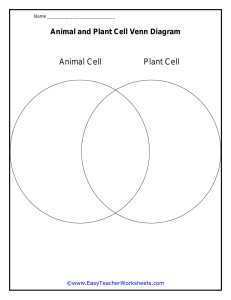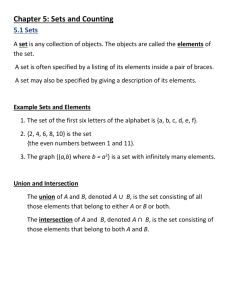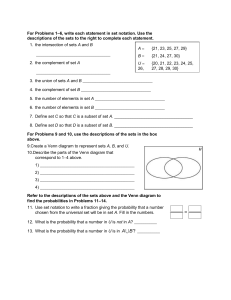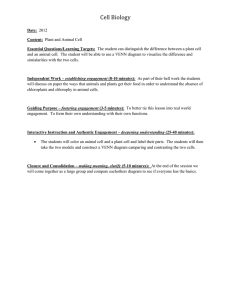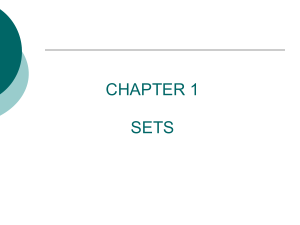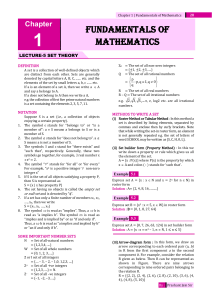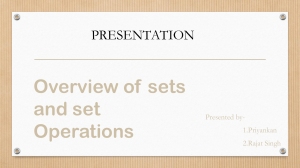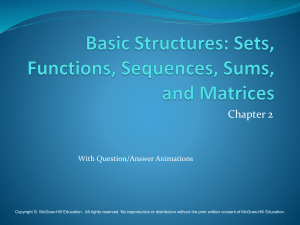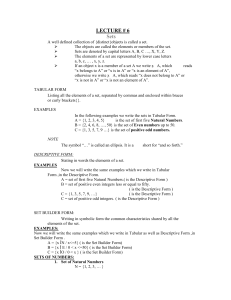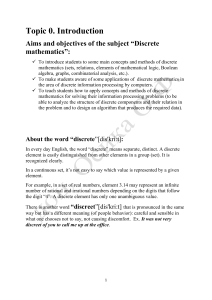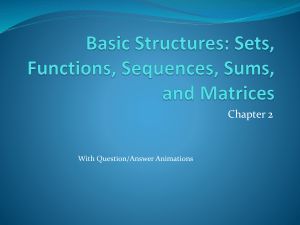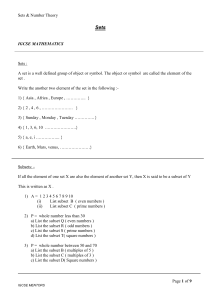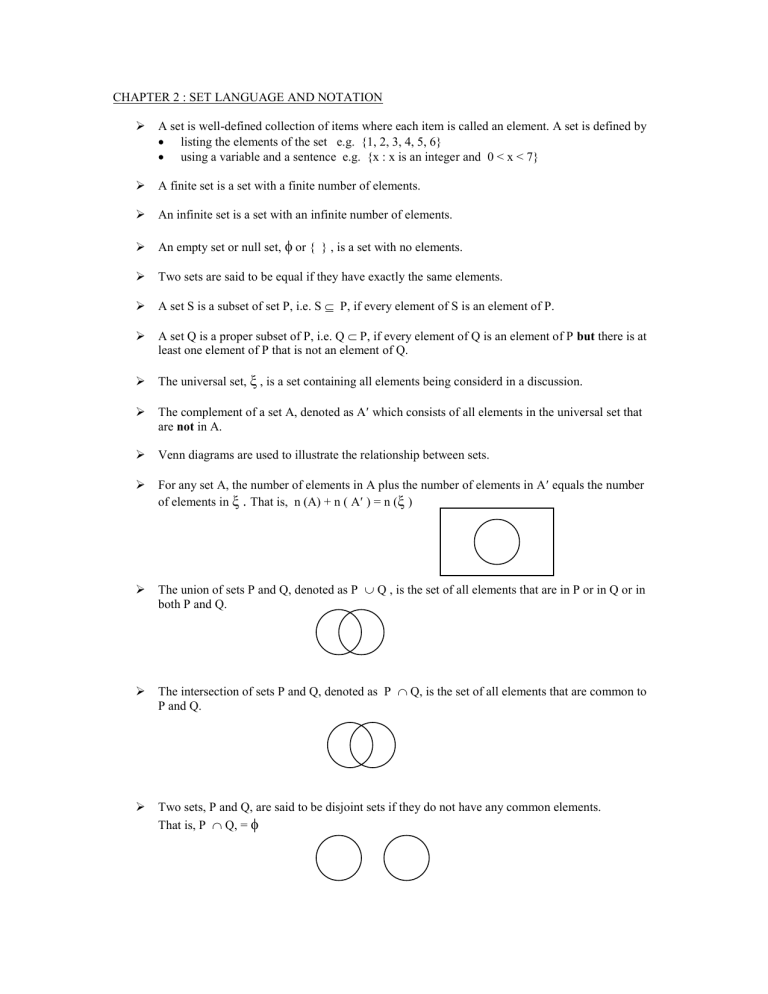
CHAPTER 2 : SET LANGUAGE AND NOTATION
A set is well-defined collection of items where each item is called an element. A set is defined by
listing the elements of the set e.g. {1, 2, 3, 4, 5, 6}
using a variable and a sentence e.g. {x : x is an integer and 0 < x < 7}
A finite set is a set with a finite number of elements.
An infinite set is a set with an infinite number of elements.
An empty set or null set, or { } , is a set with no elements.
Two sets are said to be equal if they have exactly the same elements.
A set S is a subset of set P, i.e. S P, if every element of S is an element of P.
A set Q is a proper subset of P, i.e. Q P, if every element of Q is an element of P but there is at
least one element of P that is not an element of Q.
The universal set, ξ , is a set containing all elements being considerd in a discussion.
The complement of a set A, denoted as A which consists of all elements in the universal set that
are not in A.
Venn diagrams are used to illustrate the relationship between sets.
For any set A, the number of elements in A plus the number of elements in A equals the number
of elements in ξ . That is, n (A) + n ( A ) = n (ξ )
The union of sets P and Q, denoted as P Q , is the set of all elements that are in P or in Q or in
both P and Q.
The intersection of sets P and Q, denoted as P Q, is the set of all elements that are common to
P and Q.
Two sets, P and Q, are said to be disjoint sets if they do not have any common elements.
That is, P Q, =
Example :
ξ = {x : x is an integer, 1 x 14 }
P = { x : x 6}
Q = {x : x is even }
R = { x : x is a two-digit number}
(a) On the given Venn diagram insert the members of the sets in the appropriate regions.
(b) List the members of Q ( P R )
(c) Find
(i)
n ( P R )
(ii)
n ( P Q )
Solution :
(a)
ξ
P
Q
R
Example:
(a) For each of the following where ξ = A B C, use the Venn diagram to represent the given sets
by shading the required region.
(i) (A B ) C
(ii) (B C ) A
(b) For each of the following where ξ = A B C, define, in terms of one or more of A, B and C,
the set indicated by the shaded region (s)
(i)
(ii)
(c) It is given that
ξ is the set of polygons,
T is the set of triangles,
P is the set of parallelograms,
R is the set of rhombuses and
S is the set of squares.
Draw a clearly labelled diagram to show relationship between these sets.
